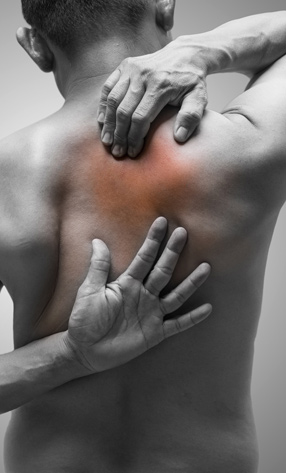
Complex Regional Pain Syndrome
Complex Regional Pain Syndrome (CRPS) is a chronic pain condition that is characterized by intense burning pain, swelling, discoloration, and stiffness. In most cases, CRPS affects one limb, such as a hand, arm, leg, or foot, after a serious injury. In the past, CRPS was known as reflex sympathetic dystrophy, Sudeck’s atrophy, shoulder-hand syndrome, or causalgia. In the majority (70 percent) of cases, CRPS eventually spreads to areas outside of the original source of pain.
CRPS occurs when there is damage to the peripheral and central nervous systems. The central nervous system (the brain and spinal cord) and the peripheral nervous system (sends nerve signals from the brain to the spinal cord) are integral to keeping the rest of the body healthy and balanced. When these systems are compromised, it may result in serious, chronic pain. Patients with CRPS experience prolonged or excessive pain, as well as changes in skin color and temperature, as well as swelling in the affected area.
Understanding CRPS
The first thing to keep in mind when it comes to CRPS is that there are two different types: CRPS-I and CRPS-II. Let’s take a closer look at each:
CRPS-I
Type 1 CRPS occurs after an illness or injury that indirectly damaged the nerve in the affected area.CRPS-II
The second type of CRPS follows a direct nerve injury.
Although the beginnings of the condition may vary, the symptoms are the same and patients will experience the same three stages of the disease:
Stage 1 - Acute
The first stage of CRPS may last upwards of three months. During these initial months, the patient may experience burning pain and increased sensitivity to touch. The pain is constant and long-lasting, followed by swelling and joint stiffness, as well as increased warmth and redness in the affected area.Stage 2 - Dystrophic
The second stage of CRPS can last anywhere from three to 12 months. During this time, swelling is more constant and the patient may notice any previous skin wrinkles have disappeared. The skin becomes cooler and the fingernails brittle, followed by more widespread, severe pain.Stage 3 - Atrophic
After one year, the third stage of CRPS may occur. When this happens, the skin in the affected area becomes pale, dry, tightly stretched, and shiny. Patients with stage three CRPS have little hope of regaining motion in that area. While the pain may decrease, the condition often spreads to other parts of the body.

Symptoms of CRPS
Some of the most common symptoms of CRPS include:
- Persistent burning or throbbing pain in the arm, leg, hand, or foot
- Sensitivity to cold or touch
- Swelling
- Skin alternates between sweaty and cold
- Changes in skin color (from white and mottled to red or blue)
- Changes in skin texture
- Changes in hair and nail growth
- Joint stiffness
- Decreased mobility in the affected area
- Muscle spasms or tremors
- Insomnia and emotional disturbance
